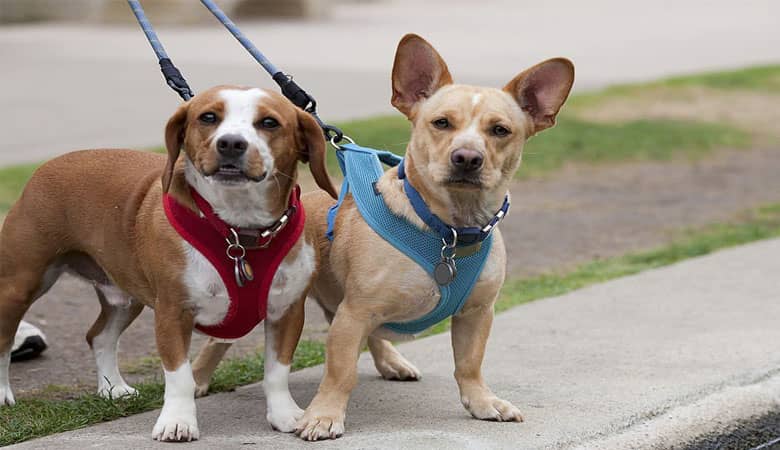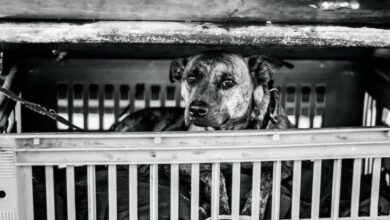Does Size Really Matter? Dog Harness Sizing Explained

If you’ve ever had a dog, then you know the struggle of finding the right size for your pet. It’s not always easy to understand how a dog’s measurements translate into numbers, and it can be tricky finding the right size harness for your pup. But if you want to make sure that your canine companion is safe in his or her new gear (or vice versa), then click here
The wrong size harness could be bad for your dog’s health
- If the harness is too small, it could cause chafing. You might want to consider getting a larger size if you’re pulling on your dog’s leash and they seem uncomfortable with the pressure or tightness of their collar.
- If the harness is too big, it could slip off or get caught on something (like another dog). This may not be an issue if you’re walking through an area where there are lots of people around—but if this happens while walking alone or in a public place without many other dogs around then I’d recommend going up one size from what’s recommended here.
- If the harness isn’t snug enough against your dog’s body then he may choke by trying to breathe more deeply through his nose rather than risk having air escape from between his teeth because there isn’t enough room for him inside these restrictive straps!
Knowing your dog’s measurements is paramount
- You should take your dog’s measurements while the animal is standing up and wearing a collar. The tape measure should be snug around your dog’s body, but not too tight.
- Take two measurements: length and girth. These two numbers combine to give you an accurate idea of what size harness will fit best for your pup!
Stop guessing and measure your dog!
If you are still unsure of the size of your dog’s harness, measure them. It is important to have a good understanding of how the harness should fit your dog so that it does not cause pain or discomfort.
- Measure the neck and chest area by wrapping a measuring tape around both areas as close to each other as possible, leaving no slack between them.
- Measure from base of neck down over shoulders until tail tip (for dogs with long tails). This measurement should be between 4 inches and 7 inches long for puppies under 10 pounds; 7 inches long for puppies between 10-20 pounds; 8 inches long over 20-40 pounds; 9 inches over 40 pounds. For experienced adult dogs who weigh 50 pounds or more this measurement should be 10 inches across back/sternum area at belly button level which will accommodate most breeds without being too large or bulky on larger breeds such as German Shepherds/Dogs who carry their weight close to their middle back due to their muscular build structure
Make sure the harness fits snugly
If you’re looking for a harness that can handle daily activities and give your pup some extra freedom, there are a few things to keep in mind. First, make sure the harness fits snugly. The last thing you want is for it to slip up over their head or shoulders and cause discomfort. Second, ensure that the size of your dog’s neck matches up with what’s recommended on their product page—you don’t want any chafing or irritation happening because of an ill-fitting harness!
After fitting the harness, make sure it doesn’t rub or chafe on any part of the dog’s body.
After fitting the harness, make sure it doesn’t rub or chafe on any part of the dog’s body. If it does, then go back to step 1 and start again.
The best way to ensure a good fit is by trying on several different sizes until you find one that feels comfortable and doesn’t restrict your dog’s movements too much.
There are some exceptions to this rule
If you are unsure about the size of your dog, it’s best to consult with a professional. Some dogs have long backs and short chests; others have long necks and short chests. Some dogs are large-chested, while others are small-chested. The best way to determine the correct harness for your dog is by consulting with a professional who is knowledgeable about canine anatomy and can help you choose the most appropriate harness for their needs.
You should always choose a dog harness that fits your dog properly.
You should always choose a dog harness that fits your dog properly. This is not just about the size of the harness, but also how snugly it fits your pet and how comfortable it is for them to wear. The best way to ensure that you get this right is by measuring their body correctly—you can find out exactly what size you need by following these steps:
- Measure yourself at the widest part of your chest (around 8 inches). Then measure around both arms at their full length (from shoulder blades to wrist bones).
- Add 1 inch if you are planning on using an adult-sized seat belt or leash; 2 inches if you have extra room in either case; 3 inches if there will be any pressure on any part of their body while they’re wearing it; 4 inches if they have long legs like German Shepherds do; 5 inches otherwise
Conclusion
If you’re still unsure of what size to get, don’t worry! Just ask someone who has experience with harnesses and they can help. But remember: if it fits right, your dog will be happy!




